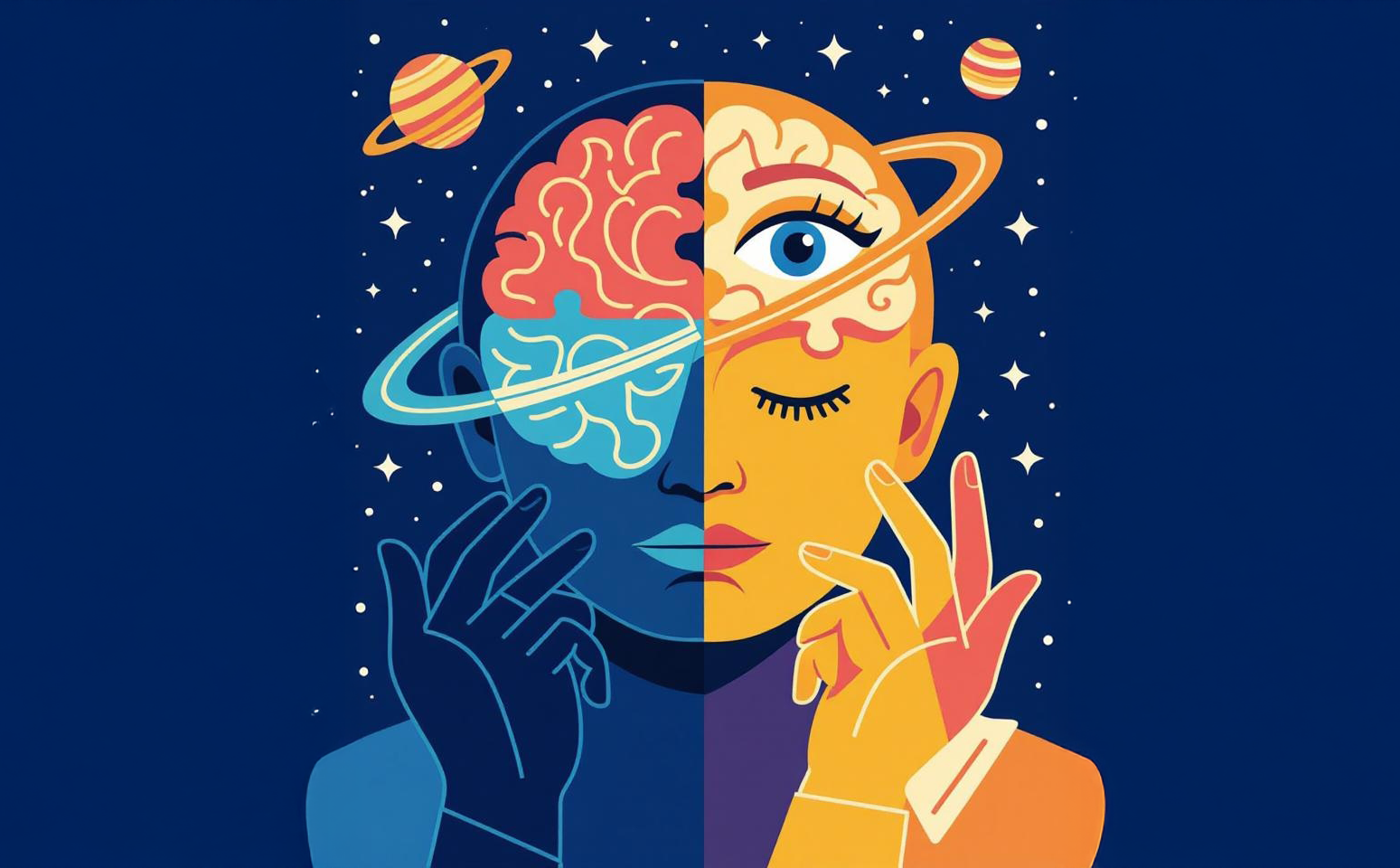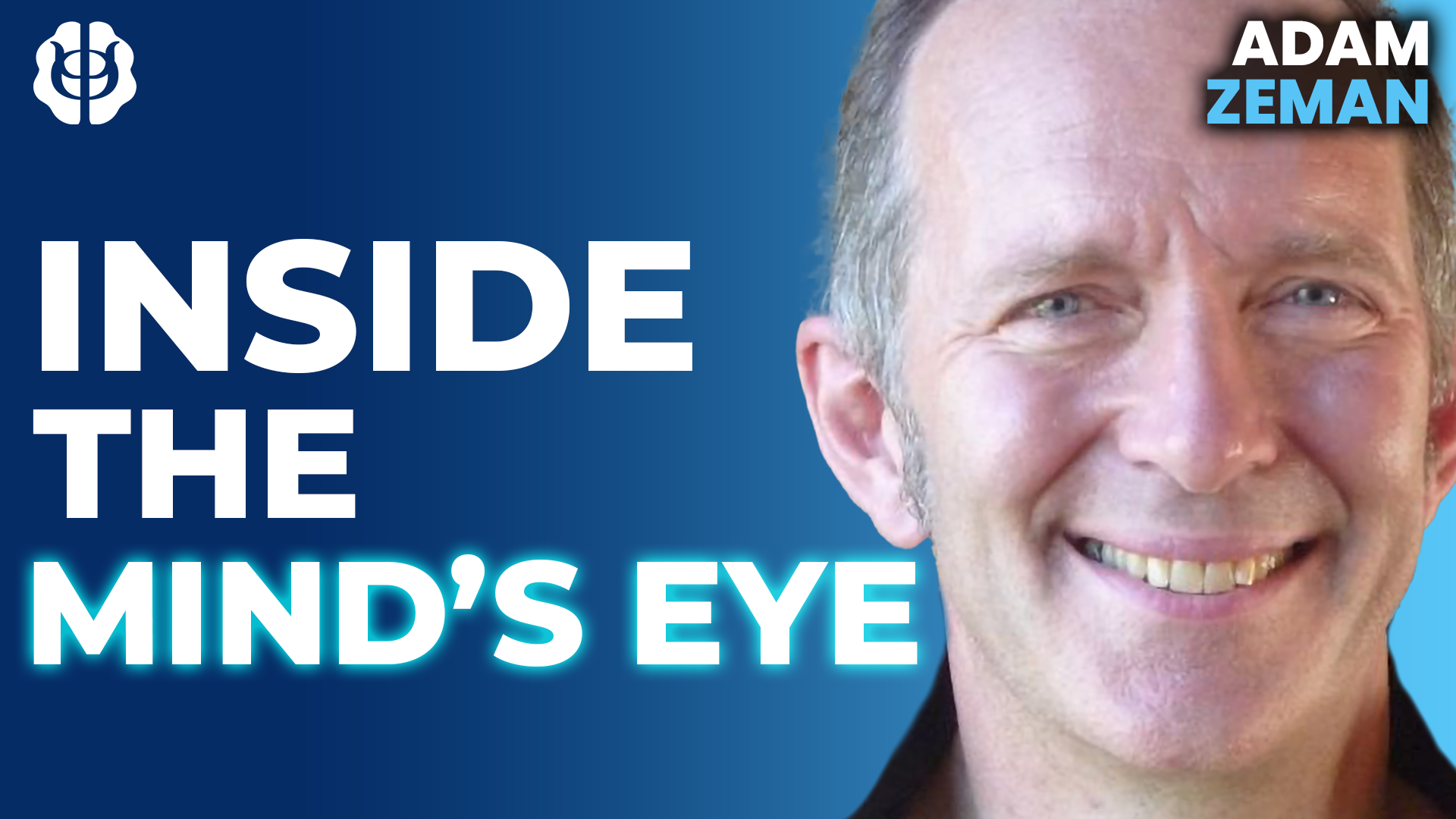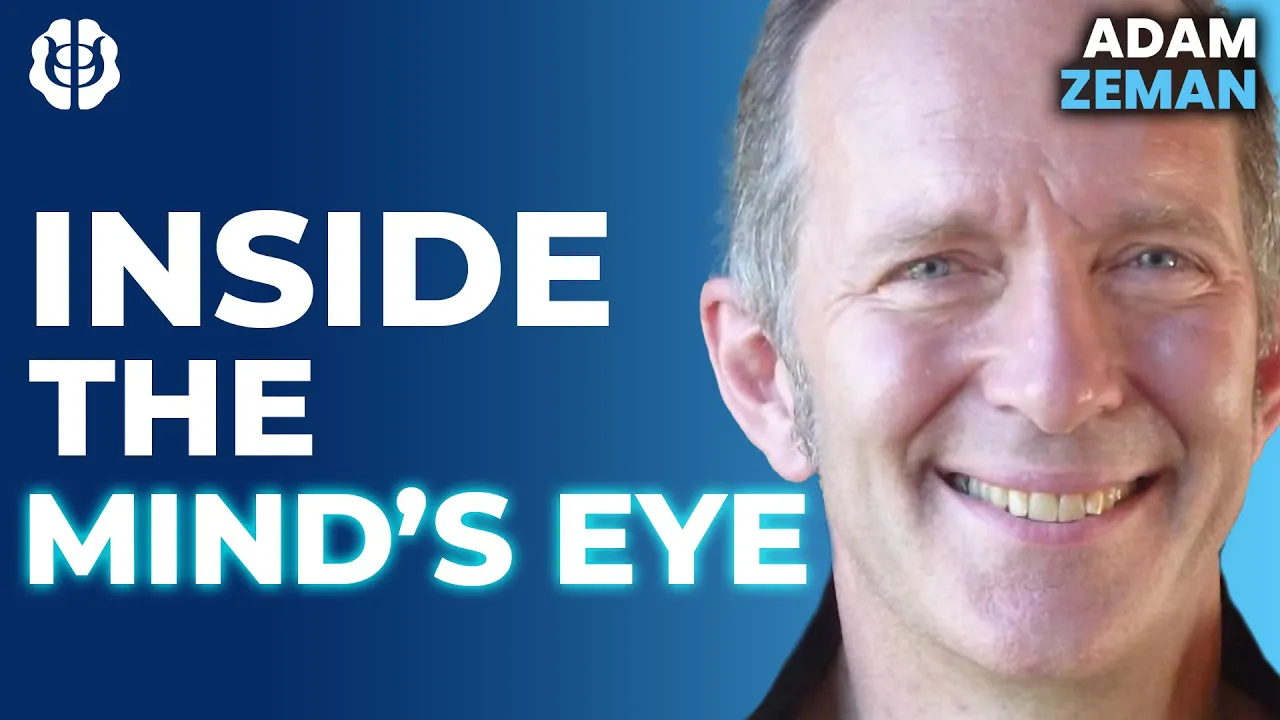Aphantasia: When the Mind's Eye Goes Dark

Have you ever wondered what it truly means to "see" something in your mind's eye? For most people, conjuring a mental image is as natural as breathing. But what if that ability was absent? This blog post delves into the fascinating world of aphantasia, the inability to form mental images. We'll explore its discovery, definition, prevalence, and the profound impact it has on memory, learning, and our understanding of consciousness. This exploration complements our recent podcast episode, What is the Mind's Eye? The Science of Imagination, Aphantasia & Consciousness | Adam Zeman, where we spoke with Professor Adam Zeman, the neurologist who coined the term aphantasia. In this episode, Professor Zeman explains the neuroscience of mental imagery and its vividness, what aphantasia and hyperphantasia reveal about the brain-mind interface, imagination’s evolutionary and social roles, and how disorders of imagery illuminate the nature of consciousness. Join us as we unravel the mystery of the mind's eye and its absence.
Introduction: The Mystery of the Mind's Eye
The ability to visualize, to conjure images in our minds, is a cornerstone of human experience. We use it to plan our day, remember loved ones, and even create art. This "mind's eye," as it's often called, allows us to mentally simulate scenarios, explore possibilities, and tap into a rich inner world. But what happens when this inner cinema is switched off? What does it mean to navigate life without the ability to consciously create mental images?
What is Imagination? Defining the Term
Before delving into aphantasia, it's crucial to understand what we mean by "imagination." Imagination is more than just visual imagery; it encompasses the ability to form new ideas, sensations, and concepts in the mind. It involves a complex interplay of cognitive processes, including memory, perception, and abstract thought. While visual imagery is a significant component for many, imagination can also manifest through other senses – auditory, tactile, olfactory, and gustatory. Some individuals might "hear" music in their head, "feel" the texture of a fabric, or "taste" a favorite dish, all without external stimuli. The definition of imagination must, therefore, be inclusive of diverse sensory experiences and creative thought processes.
The Neuroscience of Mental Imagery: Top-Down vs. Bottom-Up
To understand aphantasia, we need to briefly touch upon the neuroscience of mental imagery. Our brains don't simply "play back" visual recordings. Instead, mental imagery is a constructive process that relies on both top-down and bottom-up processing. Bottom-up processing starts with sensory input – the light hitting our eyes, for example – and builds up to a perception. Top-down processing, on the other hand, uses our existing knowledge, expectations, and memories to influence how we interpret sensory information. Mental imagery primarily relies on top-down processing. The brain activates regions typically associated with visual perception, but the activation originates from within, driven by our thoughts and memories, rather than external stimuli. This top-down activation allows us to "see" things that aren't physically present.
Aphantasia: Discovery, Definition, and Prevalence
Aphantasia, a term coined by Professor Adam Zeman, describes the inability to voluntarily create mental images. While the phenomenon itself has likely existed for as long as humans have, it was only recently given a name and brought to the forefront of scientific inquiry. Individuals with aphantasia do not experience the subjective sense of "seeing" images in their mind's eye. They may understand the concept of an apple, be able to describe its features, and even recognize it in a picture, but they cannot voluntarily conjure a visual representation of it. It is important to distinguish aphantasia from other conditions like visual agnosia, where individuals have difficulty recognizing objects despite intact visual perception. In aphantasia, the sensory processing is fine; it's the generation of mental images that is impaired. Studies suggest that aphantasia affects approximately 1-3% of the population, making it a relatively common, yet often undiagnosed, condition.
How Do You Measure Imagery?
Measuring something as subjective as mental imagery presents a significant challenge. Researchers rely on a variety of methods, each with its own strengths and limitations. Self-report questionnaires, such as the Vividness of Visual Imagery Questionnaire (VVIQ), are commonly used to assess the subjective experience of imagery. Participants rate the vividness of their mental images on a scale. Behavioral tasks, such as image generation tasks where individuals are asked to mentally rotate an object and then compare it to a physical object, provide objective measures of imagery ability. Neuroimaging techniques, like fMRI, can also be used to examine brain activity during mental imagery tasks, revealing the neural correlates of vivid imagery. However, it is important to acknowledge that all these methods are indirect measures of the underlying cognitive processes, and interpreting the data requires careful consideration of individual differences and potential biases.
Aphantasia and Dreams
One intriguing aspect of aphantasia is its relationship to dreams. While some individuals with aphantasia report a complete absence of visual imagery in their dreams, others experience vivid and detailed dreams. This suggests that the mechanisms underlying dream imagery may be distinct from those involved in voluntary mental imagery. Dreams often involve spontaneous and uncontrolled activation of brain regions, potentially bypassing the top-down control that is impaired in aphantasia. The fact that some aphantasic individuals can dream vividly highlights the complexity of the neural processes involved in visual experience and the potential for different pathways to contribute to imagery under different conditions.
The Impact of Aphantasia on Memory and Learning
Aphantasia can have a significant impact on memory and learning. Visual imagery is a powerful mnemonic tool, aiding in the encoding and retrieval of information. Individuals with aphantasia may find it more challenging to remember details that are typically associated with visual cues, such as faces, places, or visual descriptions. However, they often compensate by relying on alternative strategies, such as verbal encoding, logical reasoning, and spatial memory. Some studies suggest that aphantasic individuals may excel in fields that require abstract thinking and logical problem-solving, where visual imagery is less critical. The impact of aphantasia on memory and learning is highly individual and depends on the specific task, the individual's cognitive strengths, and the strategies they employ.
Hyperphantasia: The Other Side of the Spectrum
While aphantasia represents the absence of mental imagery, hyperphantasia represents the opposite end of the spectrum – exceptionally vivid and detailed mental imagery. Individuals with hyperphantasia report experiencing mental images that are as clear and vibrant as real-life perceptions. They can conjure highly detailed scenes, faces, and objects with ease, and their mental images may even include sensory details beyond vision, such as sounds, smells, and tactile sensations. While hyperphantasia can be a source of great creative inspiration and enhanced memory, it can also be overwhelming or distracting for some individuals. Understanding hyperphantasia provides a valuable counterpoint to aphantasia, highlighting the wide range of individual differences in imagery ability and the diverse ways in which our brains construct internal representations of the world.
Clinical Implications: Aphantasia and Other Disorders
Aphantasia is increasingly recognized as a potentially relevant factor in various clinical contexts. It may be associated with certain psychological conditions, such as anxiety or depression, although the exact nature of the relationship is still being investigated. Understanding a patient's imagery ability can be crucial in tailoring therapeutic interventions. For example, traditional cognitive behavioral therapy (CBT) techniques often rely on visualization exercises, which may not be effective for individuals with aphantasia. Alternative strategies, such as verbal self-talk or behavioral experiments, may be more appropriate. Additionally, research suggests a possible link between aphantasia and autism spectrum disorder (ASD), highlighting the potential role of sensory processing differences in both conditions. Further research is needed to fully elucidate the clinical implications of aphantasia and its relationship to other neurological and psychological disorders.
Therapeutic Uses of Imagery
Despite the challenges faced by individuals with aphantasia, imagery remains a powerful tool in various therapeutic settings. Visualization techniques are widely used in sports psychology to enhance performance, in pain management to reduce discomfort, and in psychotherapy to promote emotional regulation and healing. For individuals who can form mental images, visualization can be a highly effective way to access and process emotions, rehearse desired behaviors, and create positive mental states. Even for those with aphantasia, alternative forms of mental simulation, such as verbalizing scenarios or engaging in kinesthetic imagery (imagining physical movements), can provide similar benefits. The key is to adapt the techniques to the individual's specific needs and abilities.
The Neural Basis of Imagery: What fMRI Reveals
Functional magnetic resonance imaging (fMRI) studies have provided valuable insights into the neural basis of mental imagery. These studies consistently show that mental imagery activates brain regions that are also involved in visual perception, particularly the visual cortex located in the occipital lobe. However, the pattern of activation differs slightly between imagery and perception. Imagery typically involves greater activation in higher-level visual areas, while perception involves more activity in lower-level areas that process sensory input. Furthermore, fMRI studies have revealed differences in brain activity between individuals with aphantasia and those with typical imagery. Aphantasic individuals tend to show reduced activation in the visual cortex during mental imagery tasks, suggesting that this region plays a critical role in generating visual images. These findings provide further evidence that aphantasia is a neurobiological phenomenon with distinct neural correlates.
Imagination and Consciousness: Philosophical Considerations
The study of aphantasia raises profound philosophical questions about the nature of consciousness and the relationship between the mind and the brain. What does it mean to have a conscious experience if one lacks the ability to form mental images? Does aphantasia imply a different kind of consciousness, or simply a variation in the way consciousness is experienced? These questions challenge our assumptions about the essential features of consciousness and force us to reconsider the role of sensory experience in shaping our subjective reality. Exploring the philosophical implications of aphantasia can lead to a deeper understanding of the diverse forms of human consciousness and the complex interplay between cognition, perception, and awareness.
The Evolutionary Role of Communicative Imagination
Imagination, particularly the ability to share mental images and experiences, plays a crucial role in human social interaction and cultural development. Communicative imagination allows us to empathize with others, understand their perspectives, and coordinate our actions. Through language, storytelling, and art, we can transmit our inner worlds to others, creating shared understandings and building social bonds. The absence of mental imagery in aphantasia raises questions about how individuals with this condition navigate social interactions and communicate their thoughts and feelings. While they may not be able to share visual images directly, they can still communicate effectively through language, gestures, and other non-visual means. The evolutionary development of communicative imagination highlights the importance of shared mental experiences in shaping human culture and society.
Future Directions: AI, Computational Models, and Neuroscience
The study of aphantasia is a rapidly evolving field, with exciting avenues for future research. One promising direction is the development of computational models of mental imagery that can simulate the neural processes involved in generating visual images. These models could help us understand the mechanisms underlying aphantasia and identify potential interventions to improve imagery ability. Another area of interest is the application of artificial intelligence (AI) to assist individuals with aphantasia in visualizing information. AI systems could generate visual representations of data, concepts, or scenes based on verbal descriptions, providing a visual aid for those who cannot create their own mental images. Furthermore, continued advances in neuroscience techniques, such as high-resolution fMRI and brain stimulation, will provide a more detailed understanding of the neural circuits involved in imagery and the effects of aphantasia on brain function.
Concluding Thoughts: Practical Takeaways
Aphantasia is a fascinating and complex phenomenon that challenges our understanding of the mind's eye and its role in shaping our experiences. While the absence of mental imagery can present certain challenges, individuals with aphantasia often develop alternative strategies to compensate and thrive in various aspects of life. Recognizing and understanding aphantasia is crucial for educators, therapists, and anyone interested in cognitive diversity. By tailoring our approaches to accommodate individual differences in imagery ability, we can create more inclusive and effective learning and therapeutic environments. If you're curious to learn more, be sure to listen to our recent podcast episode, What is the Mind's Eye? The Science of Imagination, Aphantasia & Consciousness | Adam Zeman, where we spoke with Professor Adam Zeman about the science of imagination, aphantasia, and consciousness. By understanding aphantasia, we gain a deeper appreciation for the diverse ways in which human minds experience and interact with the world.








